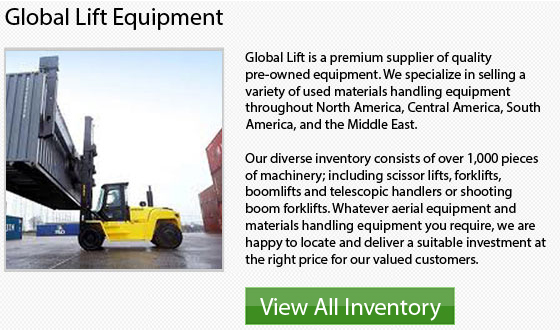
The telehandler or telescopic handler is a heavy duty machinery which is well-known within both the agriculture and construction industries. These machinery are rather similar in both appearance and function to the forklift, except it more closely resembles a crane. The telehandler provides increased versatility of a single telescopic boom that can extend forwards as well as upwards from the vehicle. The operator can attach numerous attachments on the boom's end. Several of the most popular attachments include: a bucket, a muck grab, pallet forks or a lift table.
A telehandler typically uses pallet forks as their most common attachment to be able to transport loads through areas that are normally unreachable for a conventional forklift. For instance, telehandlers could transport loads to and from areas that are not typically accessible by standard forklift models. These devices could also remove palletized cargo from inside a trailer and position these loads in high places, like on rooftops for example. Previously, this abovementioned situation will require a crane. Cranes could be really expensive to utilize and not always a practical or time-efficient choice.
Telehandler's are unique in that their advantage is also their biggest drawback: since the boom extends or raises when the machine is bearing a load, it also acts as a lever and causes the vehicle to become somewhat unbalanced, even with the rear counterweights. This translates to the lifting capacity decreasing quickly as the working radius increases. The working radius is the distance between the front of the wheels and the center of the load.
For example, a vehicle that has a 5000 pound capacity with the boom retracted might be able to safely raise only as much as 400 lb. when it is fully extended with a low boom angle. The same model with a 5000 lb. lift capacity which has the boom retracted might be able to easily support as much as 10,000 pounds with the boom raised up to 70.
The Matbro Company in Horley, Surrey, England originally pioneered telehandlers. These machines were developed from their articulated cross country forestry forklifts. Initially, they had a centrally mounted boom design on the front portion. This placed the driver's cab on the rear part of the machinery, like in the Teleram 40 model. The rigid chassis design with the cab located on the side and a rear mounted boom has since become more and more popular.